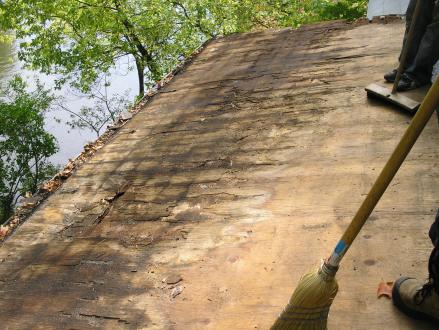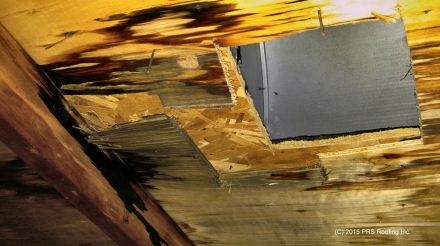It’s winter, and you’re thinking about perhaps getting a new roof in spring. Why? Well, it could have been looking a bit worn and shabby in fall. Perhaps you’re tired of living with the ice dams and icicles. You could have been in the attic and noticed some condensation on the nails and wetness on the wood. Or you may have been “stretching” it out as long as possible, and you’re getting afraid that this time it really won’t hold up any more.
So, let’s pick up the phone (or more likely, turn on the computer) and get three estimates. That’s what we are usually told to do as a prudent way of getting a quote. However, I will suggest to you that this approach is flawed, partly because it depends on the people doing the quoting actually caring about whether they will be doing the right thing for you (or not). If you are lucky, you will get three knowledgeable, experienced and ethical contractors who will evaluate your situation, determine your needs, and tailor a solution appropriate to your situation. Uh huh. What do you think your chances are?
What is somewhat more likely is that you’ll get a salesperson who needs to fill his or her quota. They may (or may not) know their product, they may (usually not) know how the product is installed and they may (but almost certainly not) know what kind of things can go wrong. Will they do a proper inspection? Will they try to understand what is working (or not) in the current installation? Will they pick an appropriate product for the situation or will they sell the product they have (whether it is appropriate or not)? How will you know if the company will do the necessary preparatory work? Unless you’ve done some homework ahead of time, you don’t.
Let’s review what you need to know.
The first step is to know what you have – that takes an inspection. (see the blog post about inspections: http://consulting.prsroofing.ca/2014/01/03/roof-inspections/). If you’re not sure of what you need to be looking at, the article “Components of a sloped roof system” (http://consulting.prsroofing.ca/articles/components-of-a-sloped-roof-system/) may help. If you’re not comfortable doing such an inspection, you could consider hiring us (see the “Contact Us” form here: http://consulting.prsroofing.ca/contact-us/).
The rest of the process is described in the article “How to get a good quote for your roof” (http://consulting.prsroofing.ca/articles/how-to-get-a-good-quote-for-your-roof/) located in the Pages/Articles/ section.
When it comes to choosing the contractors to give you the quotes, you want to use those who have the track record of good performance of work. To find them, you could use the information in the article “How to choose a contractor in Quebec: (http://consulting.prsroofing.ca/articles/how-to-choose-a-contractor-in-quebec/).
If you go through the articles I referenced, you’ll find that there’s quite a bit of homework to be done before you choose the best quote. And that’s the point – it may look like you’ve got lots of time to spring, but doing the homework takes time, and the good guys that you’ll want to hire are going to be fully booked by the time the season starts. Better put this on your to-do list.
(c) 2014 Paul Grizenko


